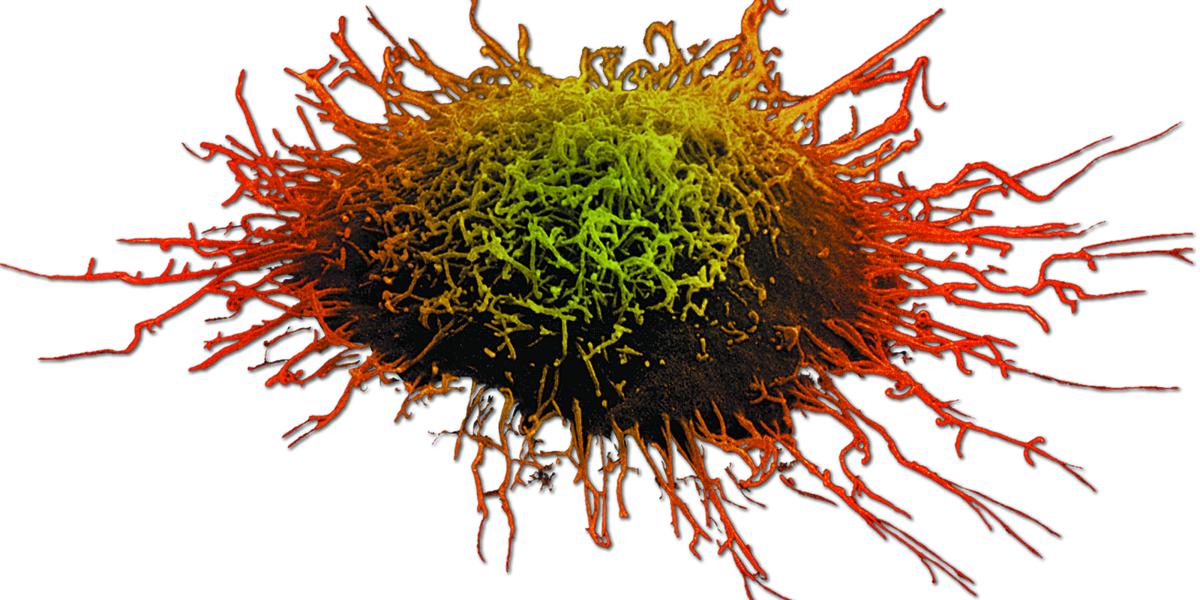Populations: Research
A cervical cancer cell
Worldwide, about 500,000 women are diagnosed with cervical cancer each year. In 1999, virologist Keerti Shah co-authored a groundbreaking paper demonstrating that virtually every one of those cases could be connected to the sexually transmitted human papillomavirus (HPV, left). “Many, many people were involved—it was a worldwide effort,” Shah says. Potential clinical applications of the research include diagnostic tests for HPV. Such tests would be simpler than the currently used Pap smear and would be an enormous help in combating cervical cancer, especially in developing countries where rates are highest.
Malaria
Caused by Plasmodium parasites, the disease was effectively treated for decades by chloroquine. But the wonder drug’s powers have been blunted by growing antibiotic resistance. Joining the search for an alternative, David Sullivanand colleagues are screening thousands of drugs currently prescribed for other illnesses—because a drug already approved for human use would save enormous research costs.
Mosquitoes
The insects spread more than 100 human diseases, including malaria, yellow fever, and West Nile virus. So two Bloomberg School researchers are taking on the insect instead of the diseases. Working in the West African country of Mali, Douglas E. Norris is using DNA fingerprinting to identify genetic mutations responsible for mosquitoes’ resistance to insecticides. Meanwhile, former fruit-fly geneticist Marcelo Jacobs-Lorena is inserting a special gene into mosquito DNA, trying to build a mosquito that cannot spread malaria.
Chances of survival
About 14 million African children have lost one or both parents to the HIV/AIDS epidemic. Some try to survive on their own, like these boys in Lusaka, Zambia. But even those orphans who find a new home may still be at risk, says David Bishai, a pediatrician with a PhD in health economics. Combing through data from a colleague’s HIV/AIDS project, Bishai discerned a disturbing trend: An orphan’s chances of survival were determined by how closely related the child was to the caregiver. Foster parents apparently give preference—perhaps more food and better health care—to closer biological relatives. Relief agencies need to take this into account, Bishai says, and give rations directly to needy children, instead of their new families. As he says, “If you just give money to Cinderella’s wicked stepmother, the child might not receive it.”
Refugees
Fleeing war and disaster, an estimated 13 million people were refugees in 2003. Hunger, thirst, and disease—notably cholera and malaria—threaten them daily. In one of their many projects, researchers from the School’s Center for International Emergency, Disaster and Refugee Studies (CIEDRS) are evaluating insecticide-treated plastic sheeting to see if it might provide protection from both the weather and malaria-carrying mosquitoes.
Care of the elderly
Like many areas of public health, it's a complicated issue, with difficult calculations. “Most people can only hold one or two numbers in their minds at a time,” says Gerard Anderson, director of the Bloomberg School’s Center for Hospital Finance and Management. “So it is important to find the right number that really tells the story.”
One telling number: Two-thirds of Medicare spending goes to people with five or more chronic conditions, such as high blood pressure, diabetes, or asthma. That information, Anderson says, tells policymakers that if they can develop a system that better coordinates care for such people, the Medicare system will not only save money but also enhance patients’ lives.
